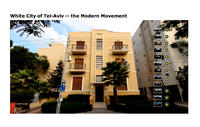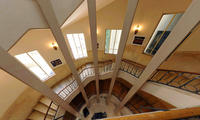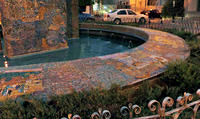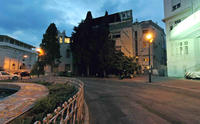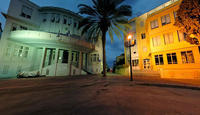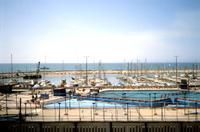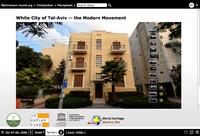You are in: Middle East -> Israel -> White City of Tel-Av... , and traditional search or Image Gallery will yield results of this site only
White City of Tel-Aviv -- the Modern Movement
| Site number: | 1096 |
|
| Type of site: | Cultural | |
| Date: | 1909,1930s-50s | |
| Date of Inscription: | 2003 | |
| Location: | Eurasia, Israel, Jaffa, Tel-Aviv, Dan Metropolitan Area | |
Up to 75 images are shown here. Click on each for more details or on Image Gallery for more images.
| Description: | Founded in 1909, Tel Aviv developed into a metropolitan city under the British Mandate in Palestine. Construction of the White City began in early 1930s and went on for 20 years; it was rooted in Sir Patrick Geddes urban plan, that manifesting modern organic planning principles. The architects of the buildings were trained and practised in Europe before immigrating. They shaped an exceptional architectural ensemble representative of the Modern Movement but set in a new cultural context. --WHMNet paraphrase from the description at WHC Site, where additional information is available. For 360 degree imaging of this site, click here. | |
| The White City is the name given to Tel Aviv, Israel, because of the large number of white, or light-colored buildings built there between the 1920s and the 1950s in the Bauhaus or International style. Over 4000 buildings in these styles can still be seen in central Tel Aviv; the largest concentration in any one city in the world. In 2003, the United Nations Educational, Scientific and Cultural Organization (UNESCO), proclaimed "The White City" of Tel Aviv as a World Cultural Heritage site, for being “an outstanding example of new town planning and architecture in the early 20th century”. The citation recognized the unique adaptation of modern international architectural trends to the cultural, climatic, and local traditions of the city. --Wikipedia. Text is available under the Creative Commons Attribution-ShareAlike License. For 360 degree imaging of this site, click here. | ||
| Source: | http://whc.unesco.org/en/list/1096 | |
| Reference: | 1. UNESCO World Heritage Center, Site Page. | |








